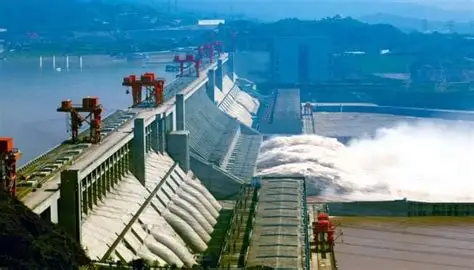Strategic expert Brahma Chellaney warns dam could destabilize riverbanks, destroy habitats, and reduce fertility of floodplains.
BY PC Bureau
July 24 – China has staunchly defended its decision to build a massive hydropower project on the lower reaches of the Yarlung Zangbo River—known as the Brahmaputra in India—saying the project lies well within its sovereign territory and will not negatively impact downstream nations like India and Bangladesh.
The project, announced by Chinese Premier Li Qiang on Saturday, is situated near the “Great Bend” of the river, where it plunges nearly 2,000 meters over 50 kilometers—a location ideal for generating hydropower. The initiative, expected to cost around 1.2 trillion yuan (USD 167.8 billion), will include five cascade hydropower stations and is being touted as one of the world’s largest infrastructure projects.
To build the hydropower project in the lower reaches of the Yarlung Zangbo River is fully within China’s sovereignty. The project aims to speed up clean energy development, improve local people’s life, and proactively respond to climate change.
China acts with a high sense of… pic.twitter.com/9myFqIsUHw
— CHINA MFA Spokesperson 中国外交部发言人 (@MFA_China) July 23, 2025
Responding to regional concerns, Chinese Foreign Ministry spokesperson Guo Jiakung on Wednesday stressed that the project serves China’s clean energy goals, promotes regional development, and supports the country’s climate commitments. “Constructing the hydropower project on the Yarlung Zangbo is entirely within China’s sovereignty,” Guo said. “We manage transboundary water resources with a strong sense of responsibility.”
Guo further assured that the project’s design and construction follow China’s highest environmental and industrial standards, avoiding sensitive ecological zones and aiming to preserve the original ecosystem “to the greatest extent possible.”
READ: Tribal Land Sold Illegally, Orissa High Court Orders Probe
Despite these reassurances, the project has sparked alarm in India and Bangladesh—both riparian states downstream—over potential disruptions to the Brahmaputra’s natural flow, which could affect agriculture, fisheries, and water availability in the region.
China has stated that it is sharing hydrological data and cooperating with neighboring countries on flood control and disaster management. “We remain in communication with downstream nations,” Guo added.
However, critics remain unconvinced.
Noted strategic affairs expert Dr. Brahma Chellaney warned that the consequences of the dam could be ecologically and geopolitically significant. In a recent statement, he said:
“A river’s perennial flow is sustained by mountain springs, upland wetlands or peat bogs, glacial melt, and perennial tributaries. In the case of the Brahmaputra, these enduring water sources lie more in Tibet than in India. Within India, it is the intense monsoonal rains that swell the river seasonally,” he said in a post on X
The Assam chief minister’s comments on China’s super-dam project are not just ill-informed — they exemplify the dangerous distortions that foster complacency in India. https://t.co/GKI7m7W1uV
A river’s perennial flow is sustained by mountain springs, upland wetlands or peat…
— Dr. Brahma Chellaney (@Chellaney) July 21, 2025
As China races ahead with construction, the debate over regional water security and ecological balance is set to intensify—underscoring the delicate interplay between infrastructure development, sovereignty, and transboundary cooperation in South Asia.













